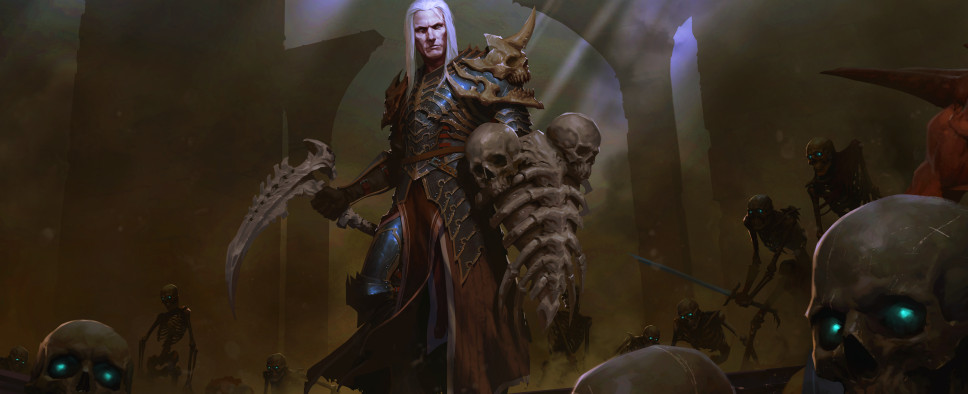Diablo III: Rise of the Necromancer Area Preview and Necromancer Lore
-
Category: News ArchiveHits: 2207

With the Rise of the Necromancer expansion and the 2.6.0 update for Diablo III releasing in a few days, the official Blizzard blog offers a preview of the new areas, and some Necromancer lore tidbits. First, we get The Shrouded Moors First Look video:
And an accompanying description, with a few other areas thrown in for good measure:
The Shrouded Moors: Remnants of a Lost Civilization
Fetid swamps stretch beyond your vision, obscured by a dense fog that commands malevolent intent. Ancient structures long since abandoned are scattered across the sunken mire, and the absence of human activity might have something to do with an ongoing eerie sense of being watched. Still, despite the sense that something unnatural looms in the distance, the notion that treasure and glory may await tempts even the most cautious being.
Welcome to the Shrouded Moors.
[...]
The Temple of the Firstborn: Desiccated or Desecrated?
An ancient monument to the earliest nephalem, the Temple of the Firstborn has long been hidden away deep beneath the surface of Sanctuary. However, a new and dangerous cult has arisen and taken residence within the buried structure. Disappearings on the outskirts of the moors are inciting fear, and the dusty tiles of the temple are streaked with disturbingly fresh blood. There is no doubt that a powerful evil now lurks below.
These cultists have been hard at work, twisting the flesh of mortals and bending creatures to their ill will. Abominations stalk the halls—horrors that should not be, filled with hate and driven by bloodthirst. Who, or what, bids the creation of such terrible creatures?
[...]
Realms of Fate: A Heavenly Consequence
The High Heavens are still reeling from the events of the Prime Evil’s assault. While the angelic host works to repair the damage from the atrocities that violated their sacred home, the Archangel of Fate, Itherael, has discovered a curious development in the far corners of his sanctified libraries.
The tomes and history stored within his libraries are changing the heavens themselves, transforming into small pockets reflecting the past, present, and potential futures. Though no one can make sense of why this has occurred, it still poses a threat to Sanctuary. Tyrael invites the nephalem to investigate, his faith in their skills, if not their hearts, still strong.
And then, we learn a thing or two about the origins of the Necromancers. An excerpt:
Mendeln the Apprentice
Many years later, Rathma sensed Lilith had returned to Sanctuary and reached out to Mendeln ul-Diomed to help stop her. In this way, Mendeln became Rathma’s first apprentice. Many events followed, with Mendeln’s brother Uldyssian gaining a powerful army of followers under Lilith’s guidance and changing the Worldstone’s power to enhance rather than hinder the nephalem. In the end, Lilith was again banished by Inarius—while Inarius himself was captured after the forces of the Burning Hells and High Heavens invaded Sanctuary.
Upon discovering Sanctuary, the Angiris Council of the High Heavens voted on whether to destroy it. Although the nephalem were spared, Uldyssian’s followers were made to forget the events that had occurred since Lilith’s reappearance, along with the knowledge of their powers. The Worldstone was once more changed to inhibit the nephalem’s latent abilities. Only Mendeln, by working with Rathma, was able to remember, without the angels and demons knowing, what had transpired. Soon after, he was given a new name—Kalan, meaning “teacher”—and set out in the world to protect the Balance.
The Priests of Rathma
In the years that followed, Mendeln founded the Priests of Rathma, known to many as the Necromancers. He began to teach others his skills and impart his understanding of the Balance, while recording said knowledge in the Books of Kalan. These early priests established their headquarters in the jungles east of Kehjistan. Once properly trained, each of his followers ventured out on their own, seeking places where the Balance had been disrupted and working to restore it. Each of these students would continue the tradition of finding and taking apprentices.

